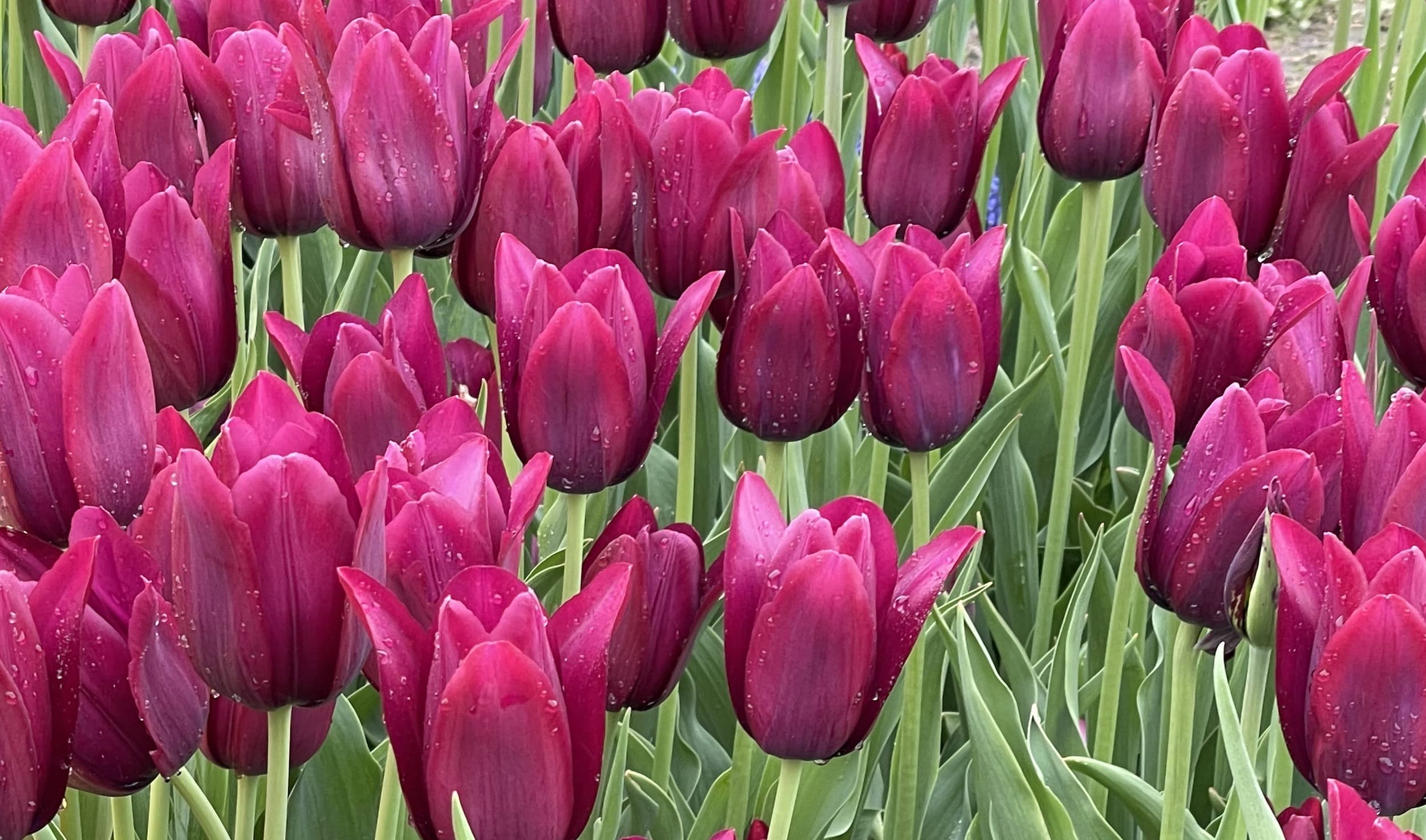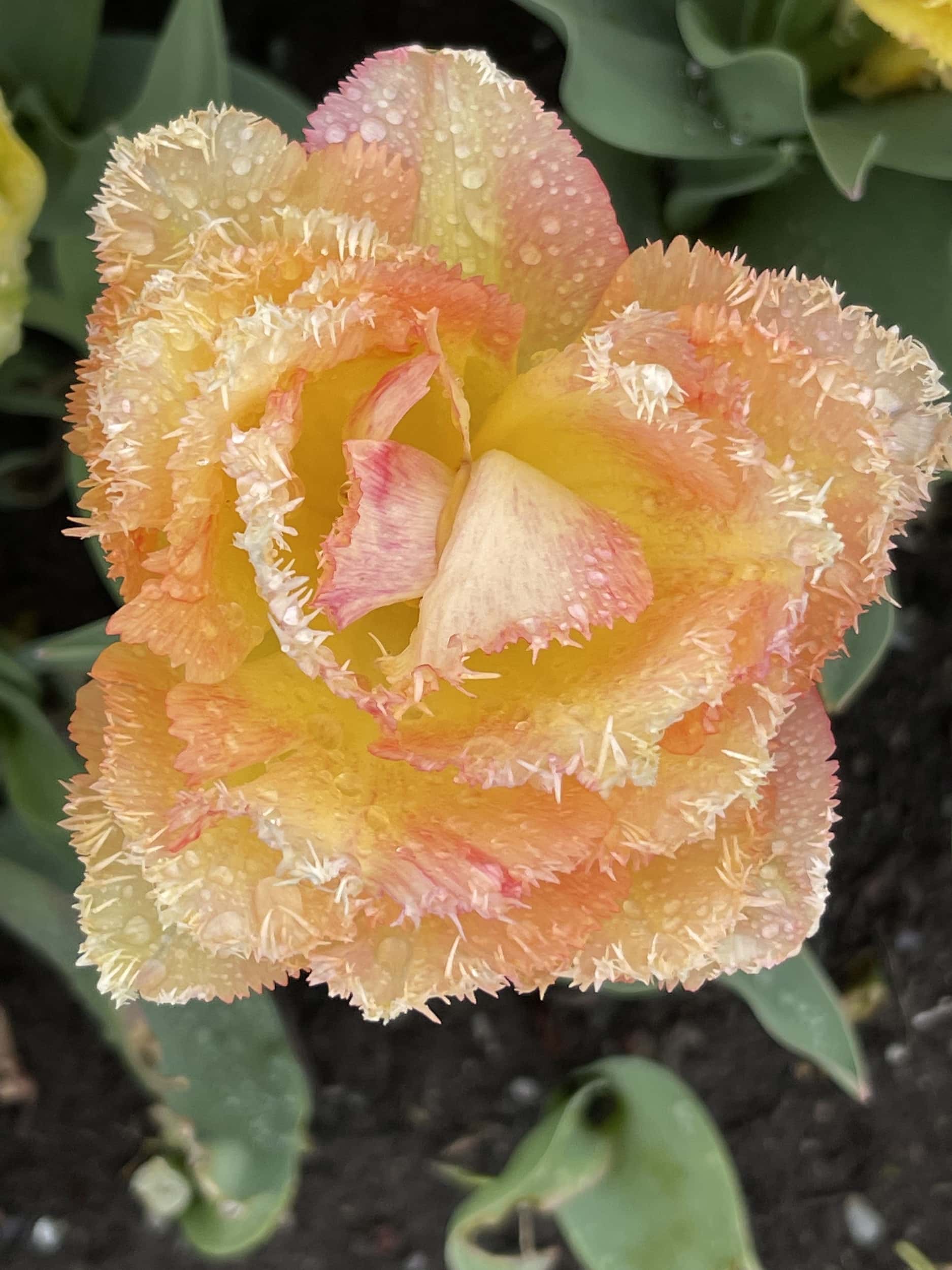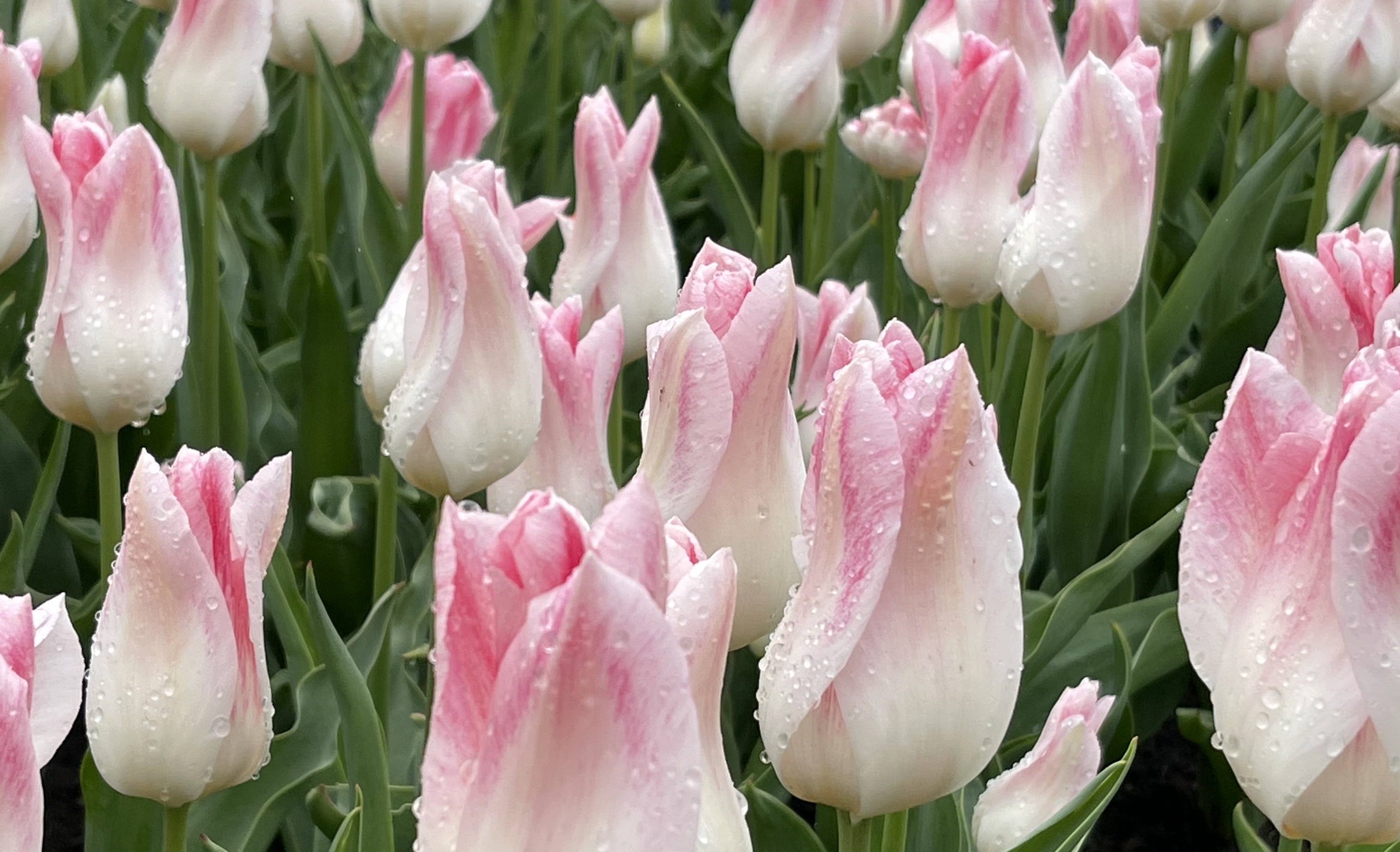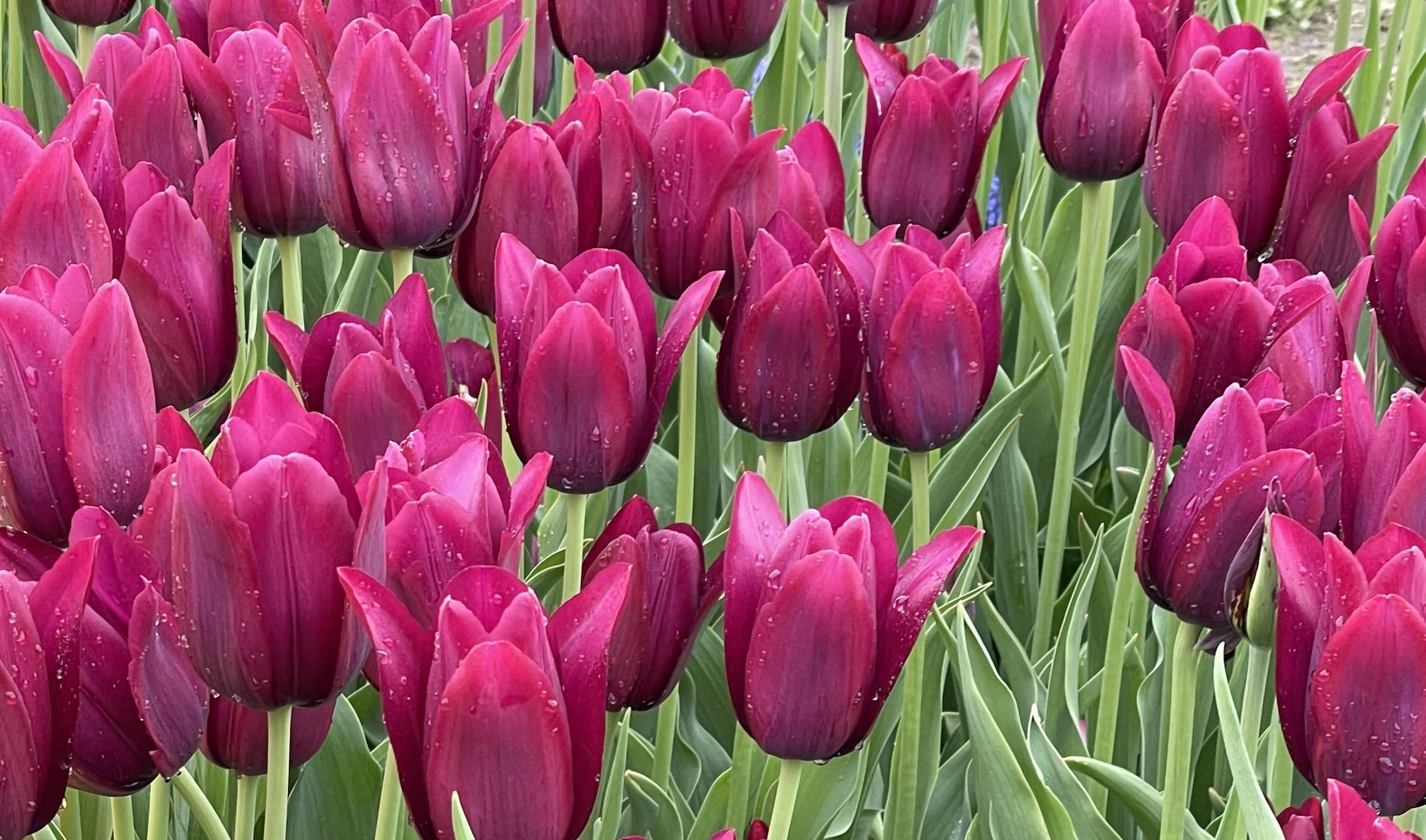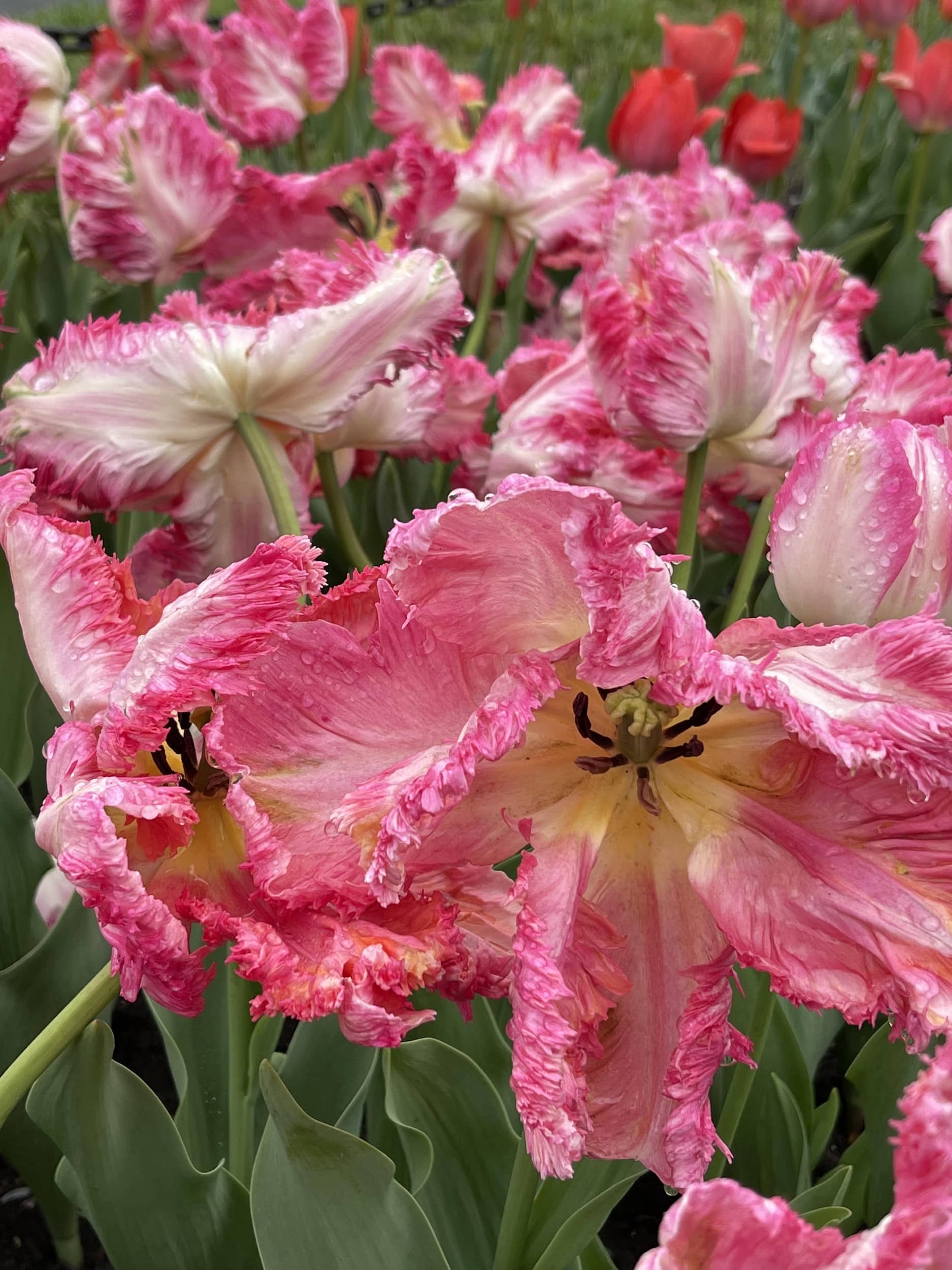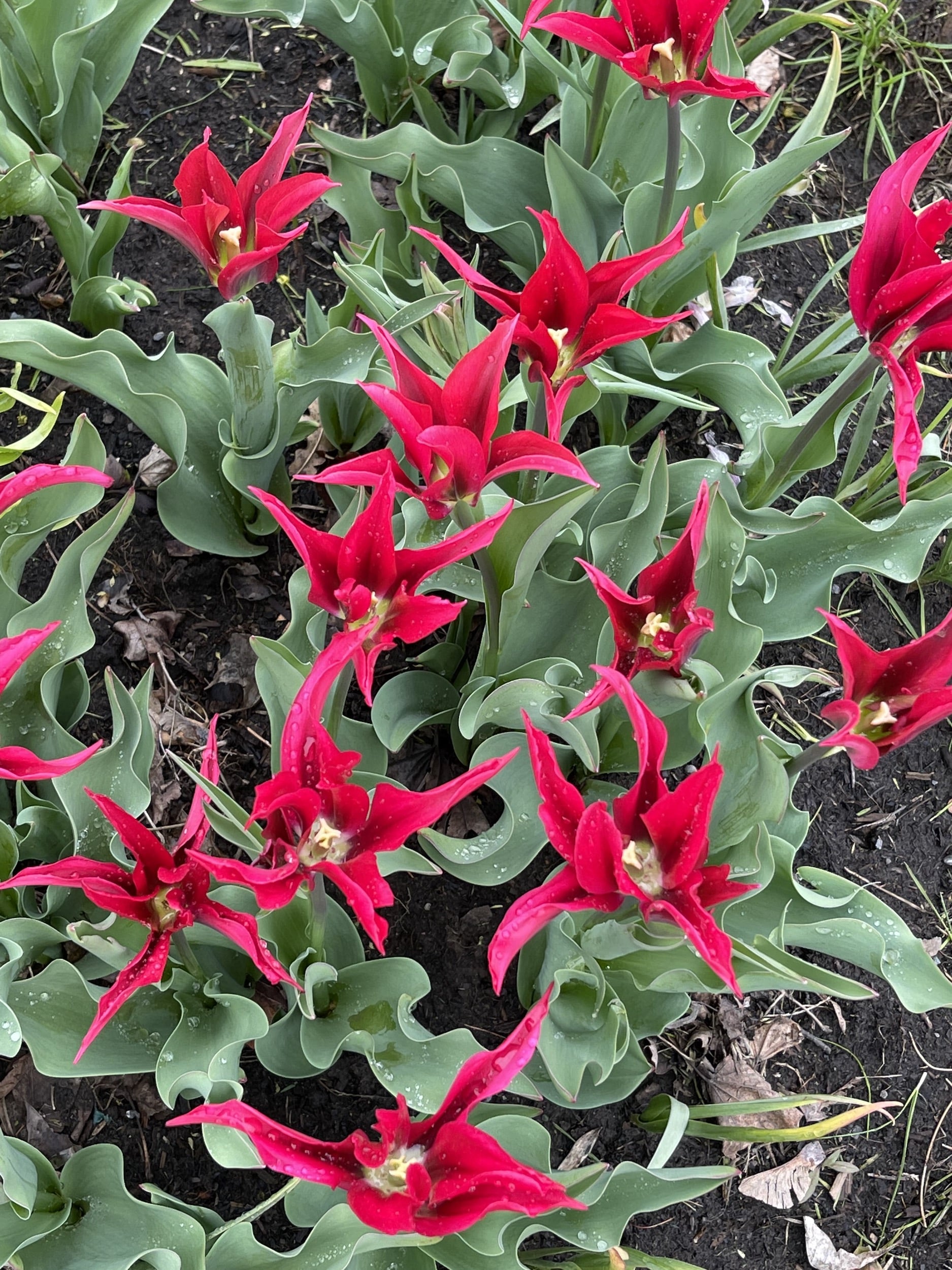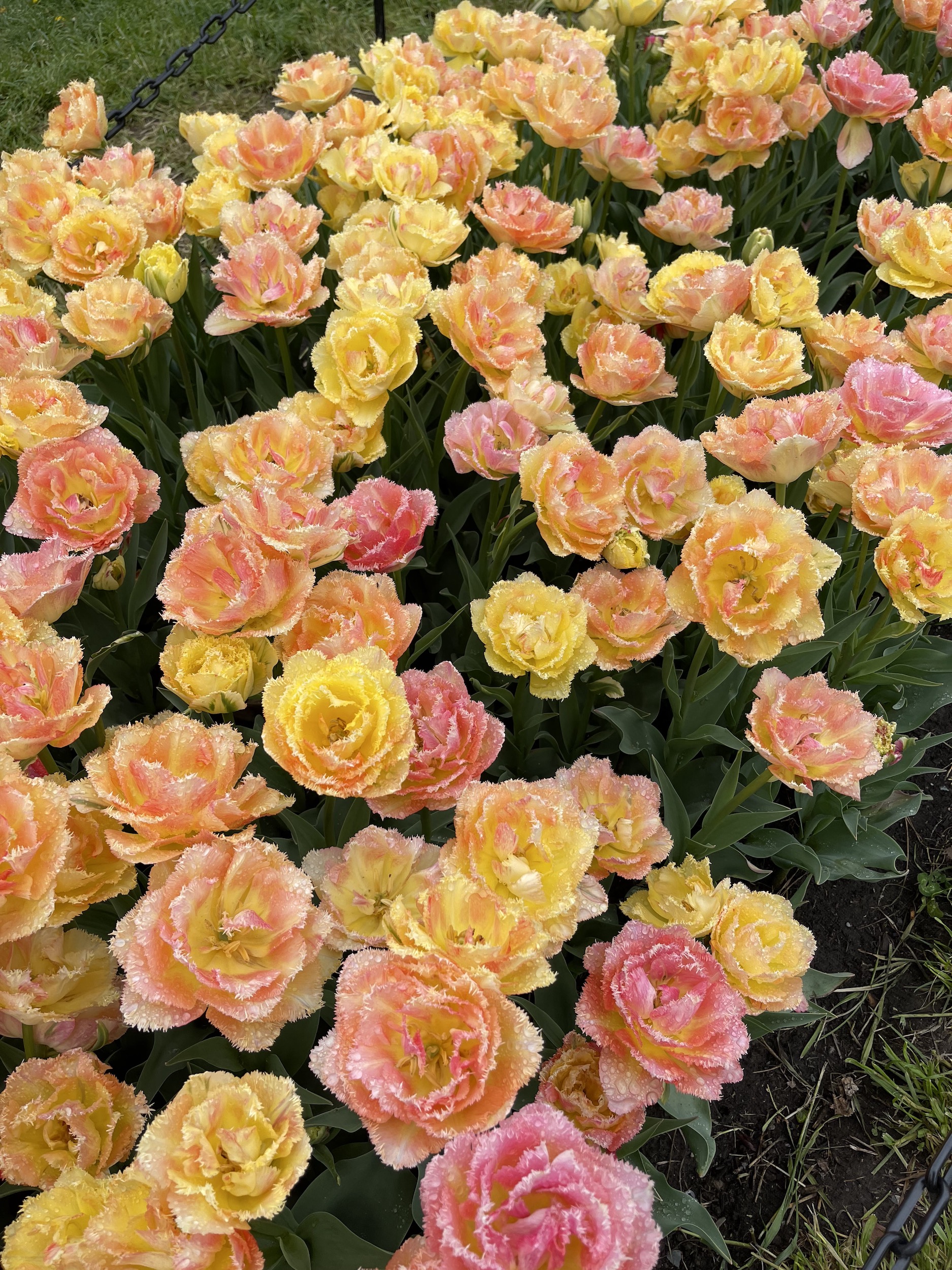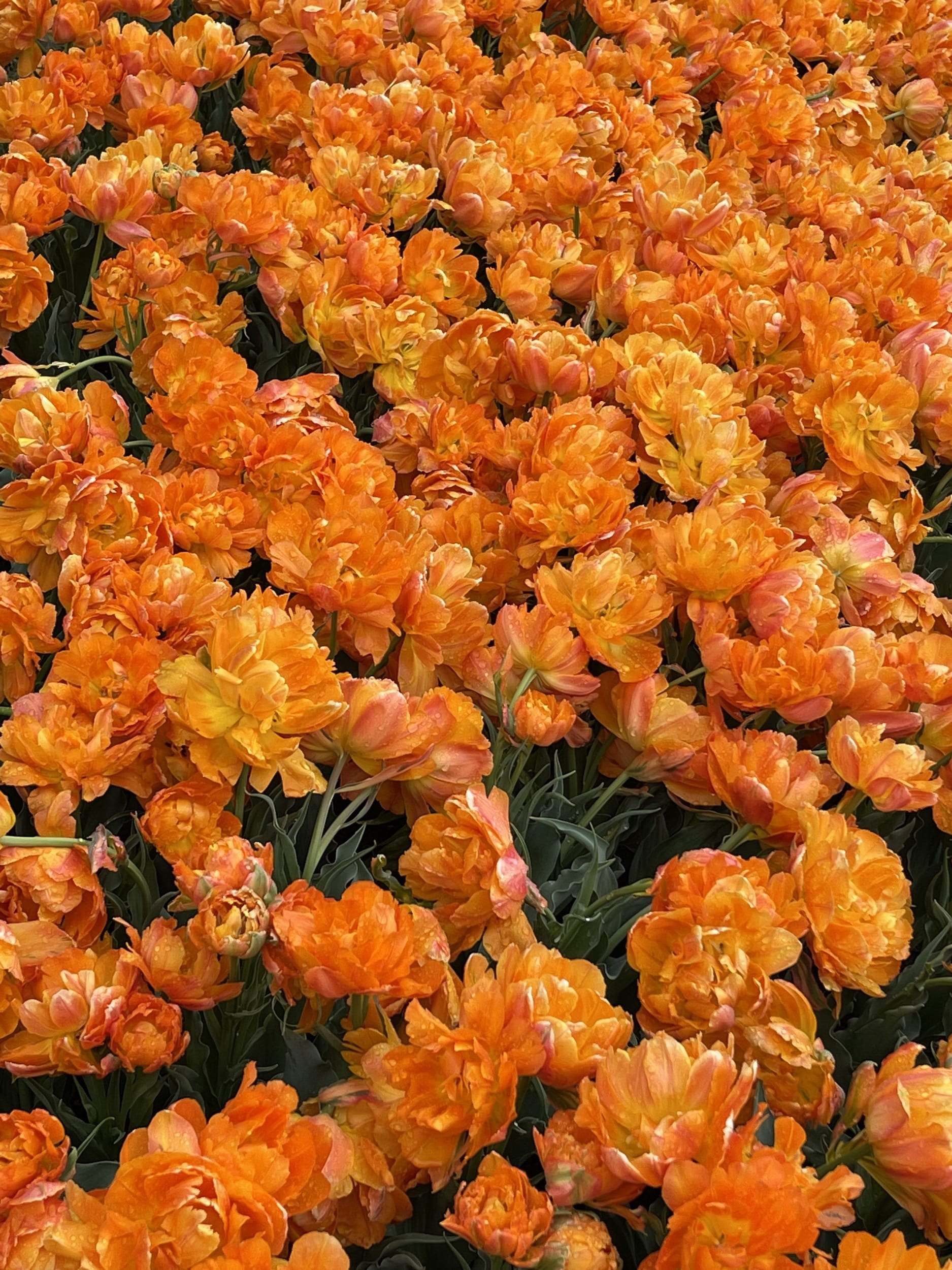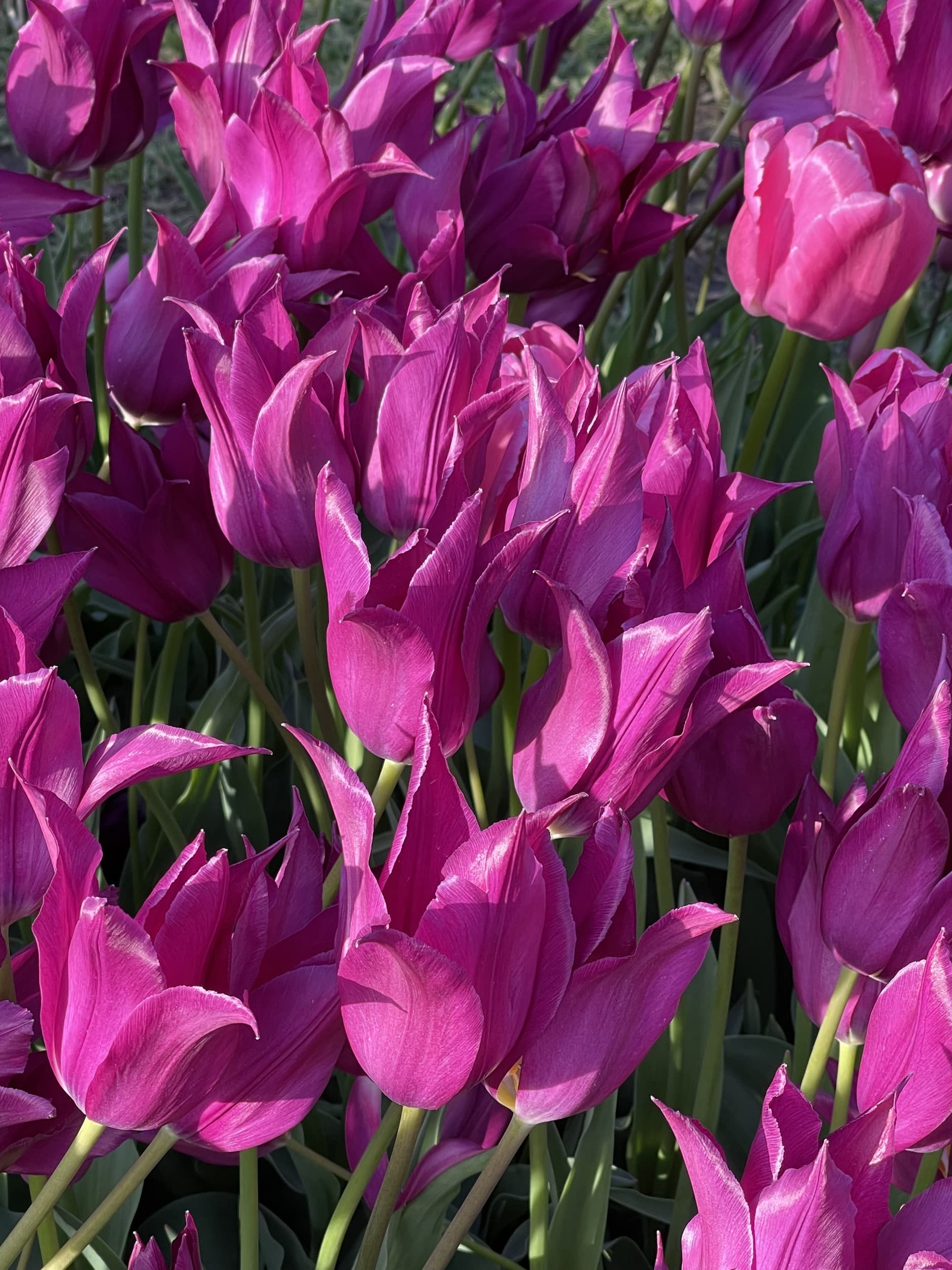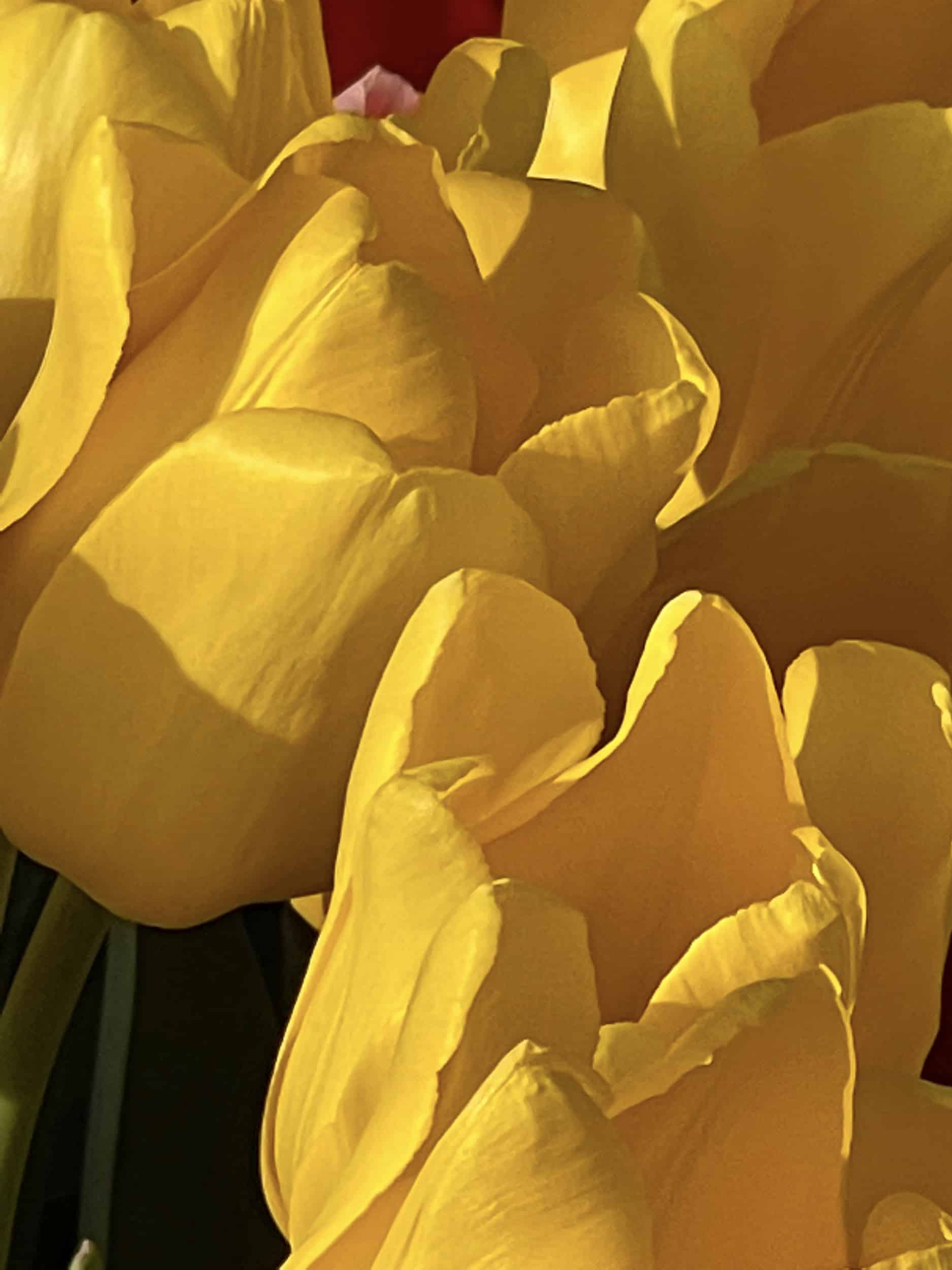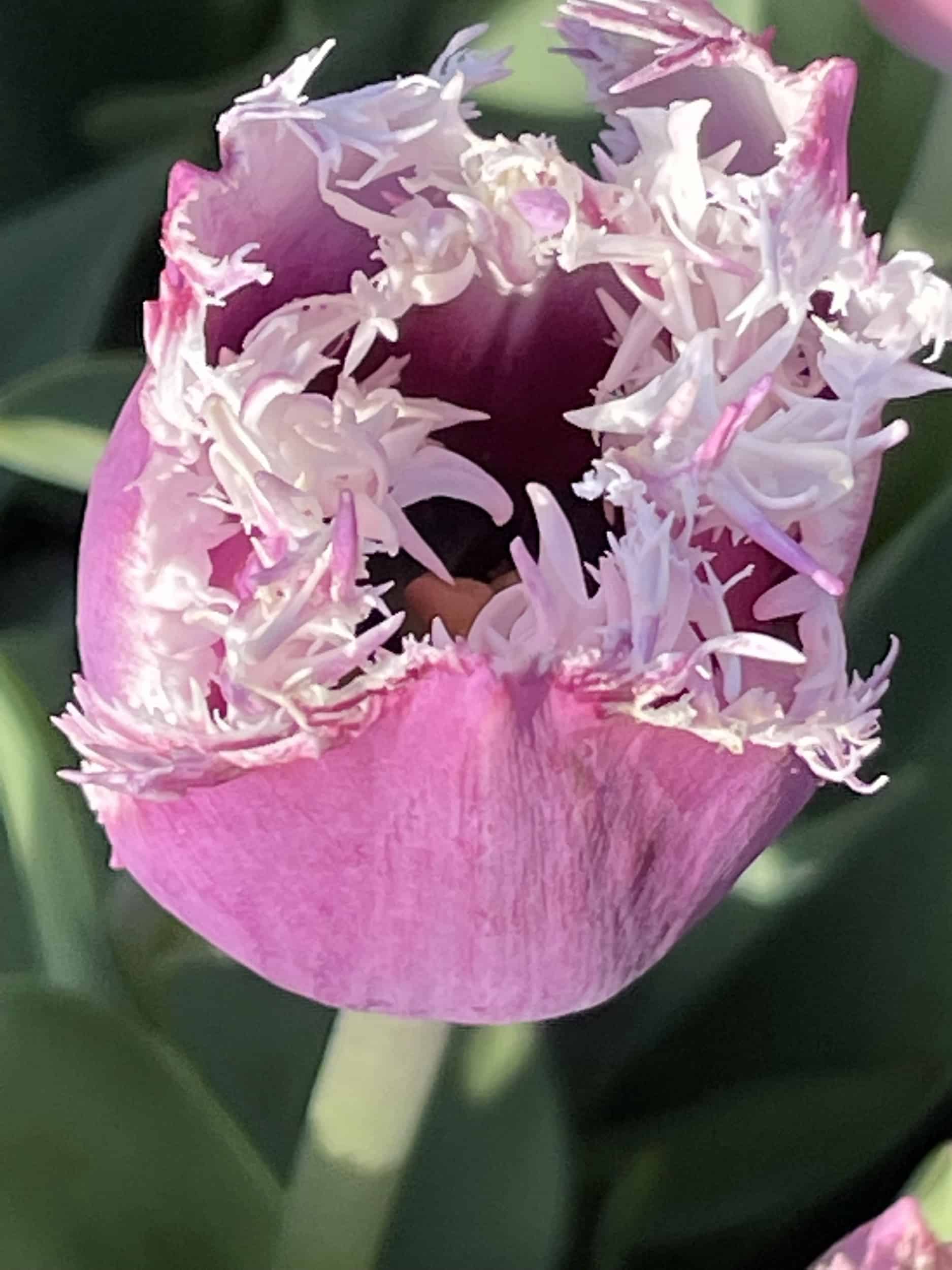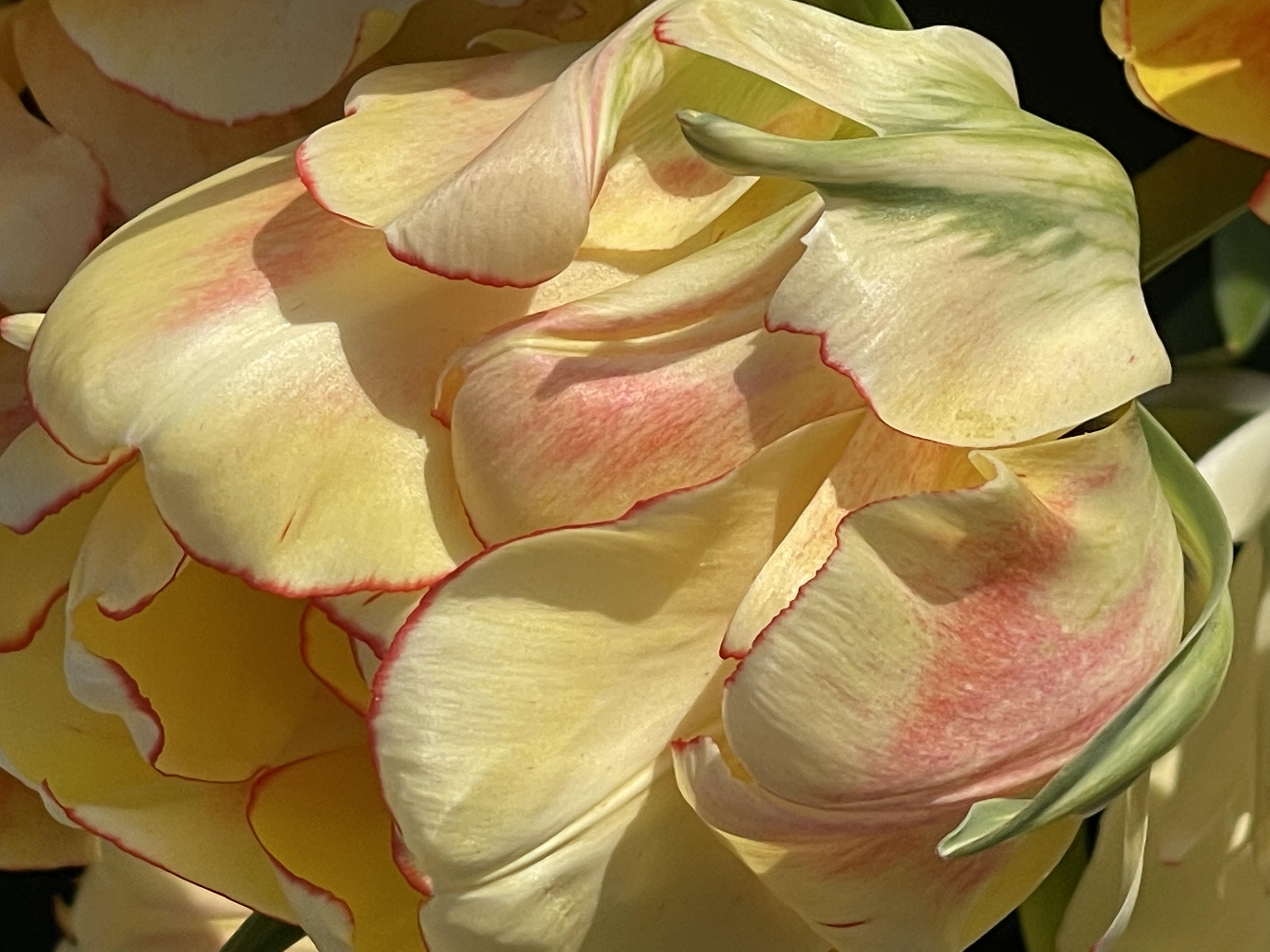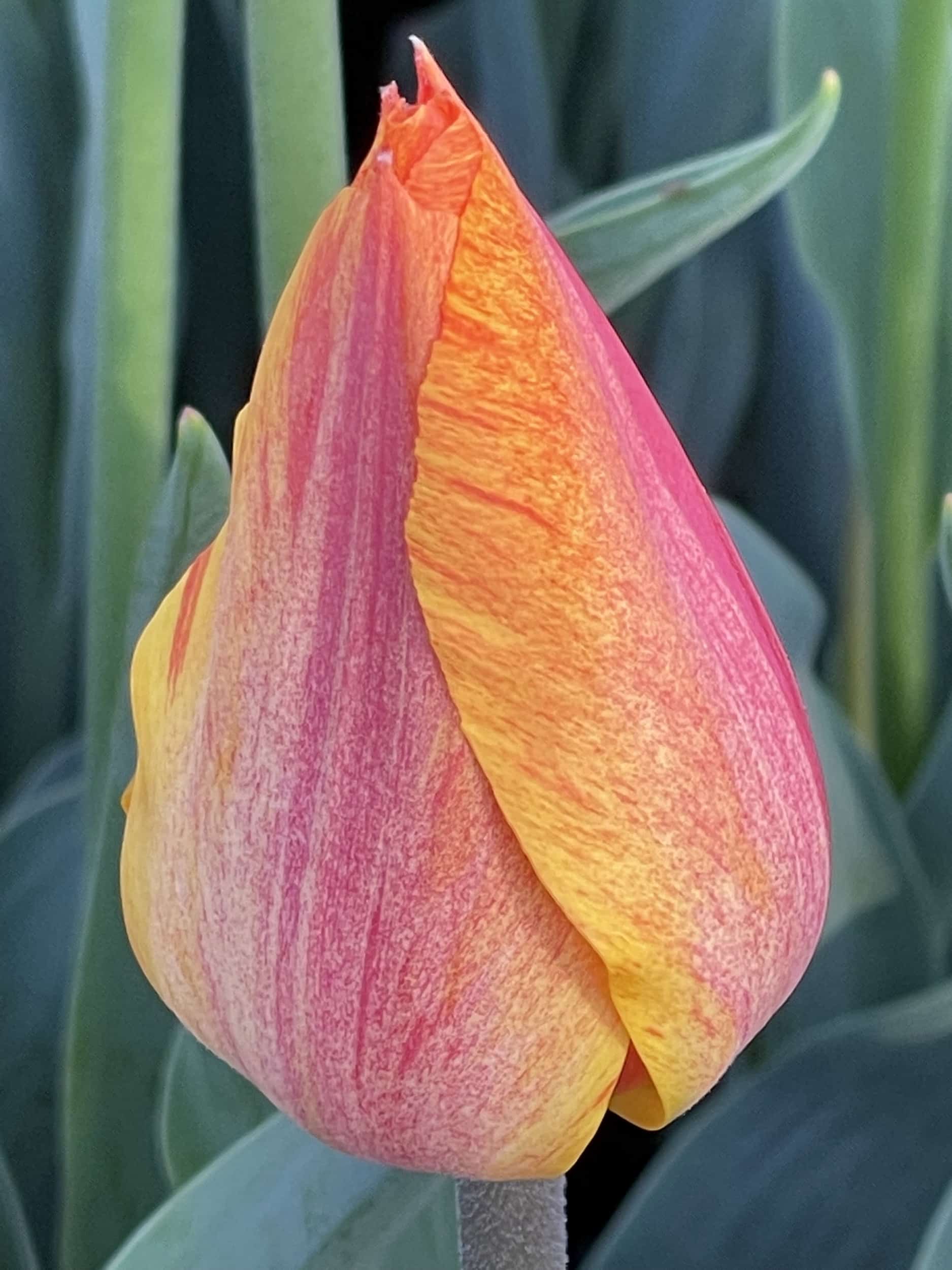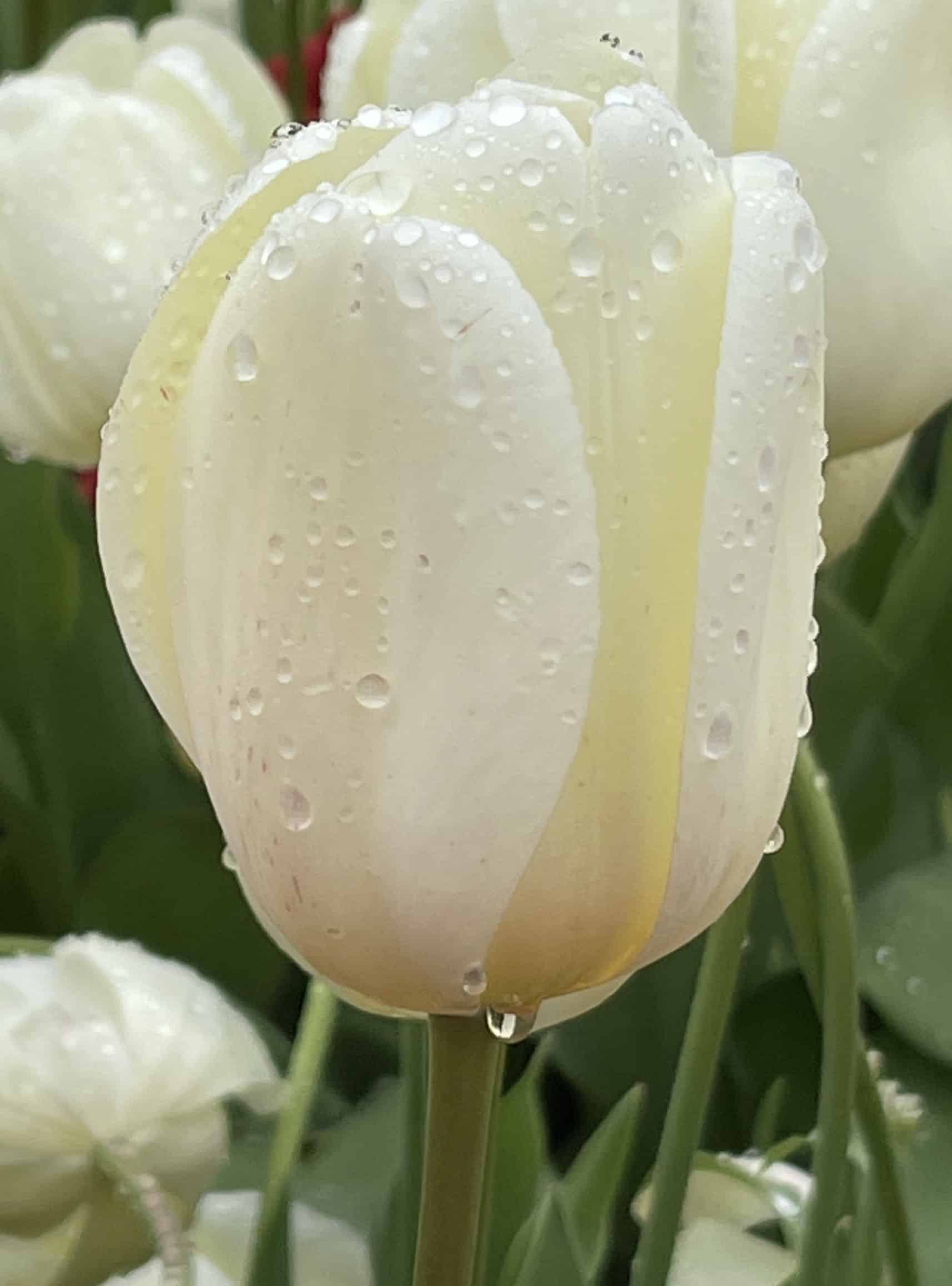
For the second year in a row, the city of Albany, NY is holding their annual Tulip Festival virtually. Customary activities such as luncheons, Dutch street scrubbing, the coronation of a Tulip Queen and the Royal Tulip Ball will be replaced with virtual programming, though music throughout the month will be live at different venues. Festival goers are free to wander among the tulip displays in Washington Park, and small, guided tours will be held on an appointment basis. The remaining activities will be virtual.
At the moment, there are over 140,000 tulips of 150 different varieties in bloom. Deena and I wandered about the eighty-one acre park grounds Tuesday, and snapped some photos of the brilliantly colored, and occasionally strangely shaped flowers.
This is the 74th annual event of Albany’s Tulip Festival, which is one of the top ten tulip festivals in the U.S. But a tulip festival in Albany (or anywhere in eastern New York State) is logical given the link between Holland and the Dutch influence here. In fact, New York City was originally founded as New Amsterdam. The original tulips came from The Netherlands because of the assistance provided by the City of Albany to the Dutch city Nijmegen which was demolished during World War II. And while some American cities likely “adopted” cities in France or England or Poland or Austria, a city in The Netherlands would have been a logical choice for the people of Albany.
Tulips are actually closely related to lilies as well as onions, garlic and asparagus. They were originally indigenous to parts of Southern Europe and Central Asia but are found on virtually every continent except Antarctica as they are so easy to cultivate. They are associated with Holland, but the first tulip did not bloom in Holland until 1594. Historically, tulips were very expensive flowers, and they carry a great deal of symbolism according to their color. Tulips are edible and have sustained starving people throughout the ages. The flowers can be used as an onion substitute in many recipes
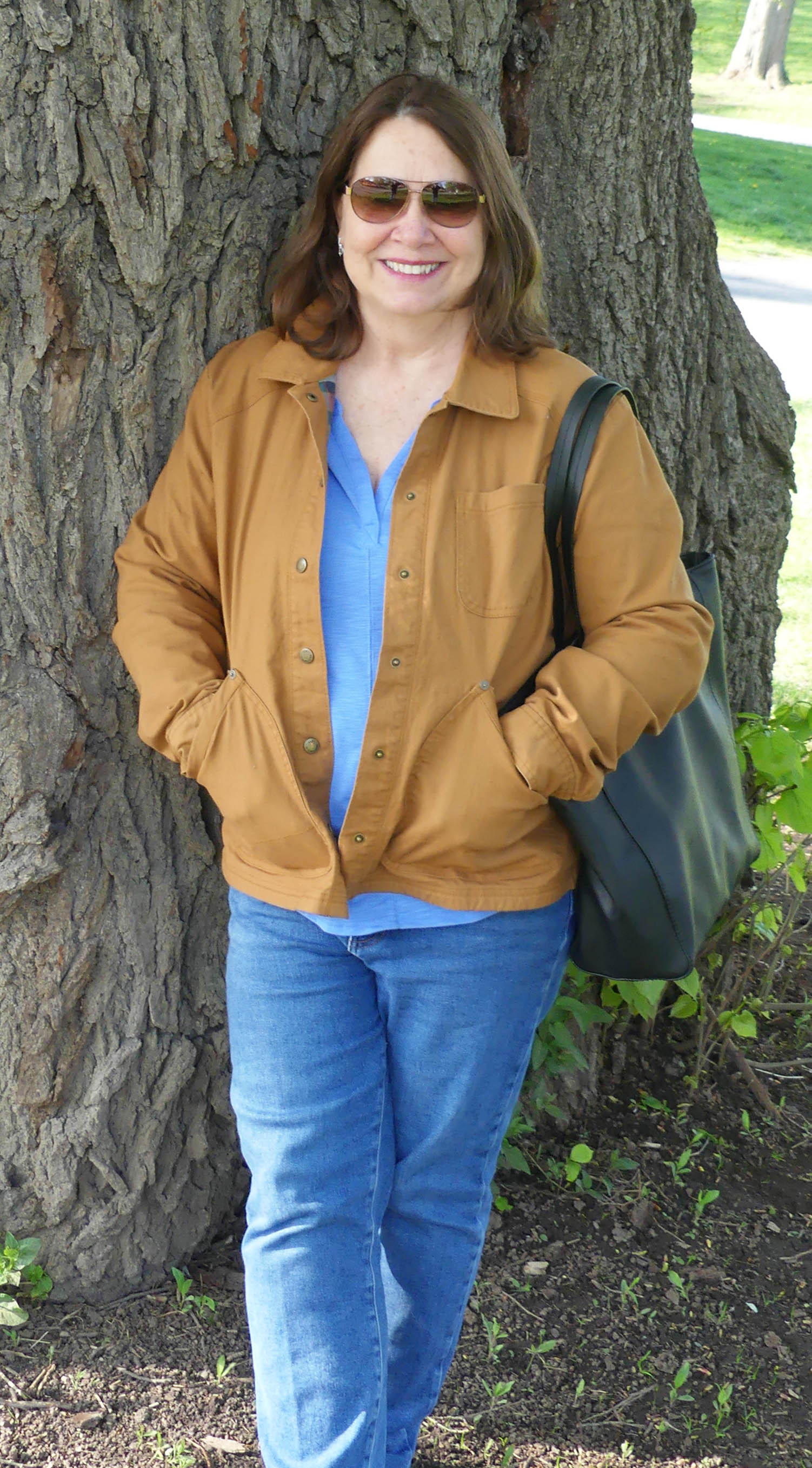
Special events are always more enjoyable if you have someone to share them with. In this case, I was grateful to have my wonderful wife Deena, who has enjoyed the festival since she was a young girl growing up in the Capital City, and who encouraged me to visit this spectacular display once we had moved back to the Empire State.
Nijmegen, Netherlands and Albany, NY: Sister Cities
Nijmegen is a modern, fair-large city in the Netherlands, but historically it has placed a pivotal role in Europe. The earliest mention of the locale was in the first century before Christ when the Romans built a military camp on the site, giving them a commanding view of the surrounding countryside*** (Enckevort and Willems: 125.) The Benelux countries (Belgium, Netherlands and Luxemburg) had been repeatedly invaded by German and alllied forces during the Twentieth Century. In fact, Nijmegen, which is the oldest city in The Netherlands, was the first city invaded by German forces as they drove towards France in May 1940. However, the real devestation to the city as pictured below, came at the hands of the Allies who bombed the heart of the city in error. At the beginning of the war, there were 530 Jews living in Nijmegen, but by the end of the war, all but 52 had fled elsewhere, perished at the hands of the Gestapo or died as casualties of the war.
Because of the inclunce of the early Dutch settlers in New York State, including the Capital Region of Albany, the city send many tons of relief supplies and building materials to reconstruct Nijmenen after the war. In appreciation, Queen Wilhelmina of The Netherlands donated 2,000 tulip bulbs and the plans for the first annual tulip festival began to sprout.
Footnotes
*** “Shortly before 12 BC, the Roman army built a legionary camp on the Hunerberg, a plateau which is part of the ice-pushed ridge between Nijmegen and Kleve. The camp measures 42 ha which is sufficient to accommodate a force the size of two legions. Some of these troops, which were housed in wooden barracks, may have been quartermasters, charged with preparations for the campaigns into Germany under Drusus, between 12 and 9 BC.
The legionary camp seems to have been deserted around 10 BC and a new and smaller fort was built at the Kops Plateau, to the east of the Hunerberg. This fort was rebuilt several times, its maximum size being 4.5 ha. A rather large and luxurious praetorium and the number of what appear to be houses for officers suggest that this was the base-camp of a high-ranking commander, possibly Drusus himself.”
One of the legions that was likely stationed in or around Nijmegen was legio XIII Gemina (Twin) based on artifacts discovered in the Roman ruins at that locale and elsewhere.
Citations
Harry van Enckevort and Willem J.H. Willems “Roman cavalry helmets in ritual hoards from the Kops Plateau at Nijmegen, The Netherlands,” Journal of Roman Military Equipment Studies 5 1994, 125-37.

For more information, click here.
All photos by the author unless otherwise credited.
